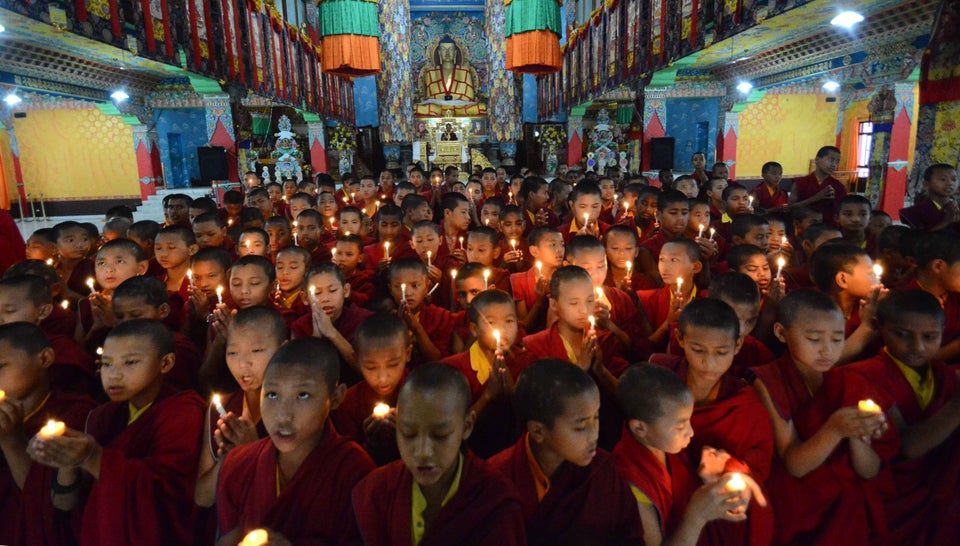WASHINGTON -- In the aftermath of the powerful earthquake that hit Nepal on Saturday, the U.S. has no plans to transport stranded U.S. citizens back home.
The State Department on Monday acknowledged the death of at least four U.S. citizens in an avalanche on Mount Everest, but a spokesman did not have an estimate of how many Americans remained in Nepal, or of how many U.S. nationals had been reported missing. While the Indian and Chinese governments have airlifted and bussed out thousands of their own citizens since the earthquake, the U.S. government is directing Americans in Nepal to use commercial flights to transport themselves back home.
“The airport remains open, and we understand that many U.S. citizens are departing on commercial flights,” State Department spokesman Jeff Rathke told reporters on Monday. “We are assisting Americans there with flight arrangements. We've also been providing shuttle services to the airport given the very difficult conditions. I don't have anything to confirm about other sorts of transportation.”
Rathke added that the U.S. embassy in Nepal is open and providing shelter to both U.S. and non-U.S. citizens.
Kusang Lama is one of the Americans trapped in Kathmandu, Nepal’s capital city, which was ravaged by the initial earthquake and multiple aftershocks. Lama arrived in Nepal just days before the earthquake with her mother, Yonten Raza, on a business trip.
Raza, who emigrated from Nepal to the U.S. when she was 18, currently owns five shops in the San Francisco area where she sells Tibetan carpets and handicrafts, according to her partner, Robert Parenteau. She and her daughter often travel to Nepal to buy merchandise for the stores, he told The Huffington Post.
Raza was aboard a flight from Kathmandu to New Delhi, India, when the earthquake struck just outside Nepal's capital. After an initial delay, the plane departed for India, and Raza has been unsuccessfully trying to return to Nepal to meet back up with her daughter ever since.
Lama is currently staying with a relative in a Tibetan Buddhist monastery that is offering refuge to victims of the earthquake, Parenteau said. She was originally scheduled to leave Nepal on May 1, but many of the commercial flights out of the country have been delayed indefinitely to make room for a slew of incoming disaster relief flights.
Meanwhile, her family is worried that conditions will continue to deteriorate in Kathmandu over the next several days. "Between the human corpses and the dead cattle," Parenteau said, he is worried about a cholera outbreak. A spokesman from the international relief group Doctors Without Borders echoed this sentiment, noting that "in the aftermath of the earthquake, there is the danger of epidemics breaking out, including cholera, malaria and typhoid fever."
Parenteau is also frustrated that the U.S. government isn't doing more to help get Lama to safety. “The Americans are sitting there twiddling their thumbs," he said. "You can fill out a form to let them know you’re in Nepal [but] that’s all the U.S. government has done." He said Lama’s family was currently filling out the form on her behalf.
So far, U.S. aid has been focused on assisting the Nepalese government in its disaster response and not on evacuating Americans. The Department of Defense has deployed two C-17 military transport aircraft, which are expected to arrive in Nepal Tuesday morning local time. The two planes will carry a combined 120 passengers, including a USAID disaster assistance response team, two urban search and rescue teams from Fairfax County and Los Angeles County, and several journalists.
There is no indication that personnel on these two flights will be rounding up U.S. nationals and taking them home. “I don’t know what their specific mission is there, other than to assist with search and rescue missions,” said Lt. Col. Tom Crosson, a Pentagon spokesman. Crosson added that the State Department is in charge of coordinating missions to rescue Americans, and can request the deployment of military personnel to assist with evacuations. A State Department spokeswoman declined to answer questions from HuffPost about whether there are any contingency plans to evacuate Americans if the situation at the airport gets worse.
For Parenteau, the U.S. response is too little, too late. “I see no reason why the U.S., which has military bases around the globe, which can use drones to pinpoint the whereabouts of suspected terrorists, can’t get their act together and get an airlift," he said.
